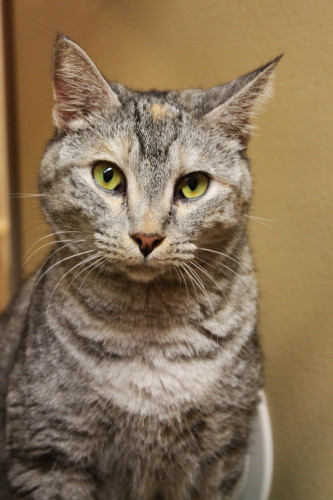Cerebellar Hypoplasia In Cats
Also known as congenital cerebellar hypoplasia (CH), this condition is an underdevelopment of the cerebellum in newborn kittens. The cerebellum is the smaller part of the brain located at the back of the skull behind of the cerebrum, and is responsible for controlling balance, muscle tone and coordination.
For many years, cats with CH were put to sleep as soon as the disorder was discovered. Today the understanding of CH has grown, and kittens born with this condition are often placed for adoption or kept by their owners.
This condition can be caused by an inherited disease or an infectious problem. The most common cause in cats is an infection with the panleukopenia virus, which can be contracted by the queen (feline distemper), or by receiving panleukopenia vaccines (considered "core vaccines"). This virus spreads from the queen during the pregnancy, and it will more likely to result in damage as the virus passes through the placenta barrier to the fetus in the uterus.
Additionally, this condition can also be caused by the absorption of Griseofulvin prescribed for ringworm. If the queen has been given this ringworm treatment during her pregnancy it is likely that one or more or her kittens will be born with brain damage.
Note, this condition is usually avoidable, the first step is to make sure that the queen is healthy, and always ask your veterinarian for help with health issue treatments prior or during the cat's pregnancy.
The signs and symptoms of a kitten with cerebellar hypoplasia are tremors, exaggerated movements, shaky head and jerky movements. This condition is not progressive and not contagious. There are different degrees of CH , ranging from mild to severe cases, which are classified by the severity of the cat's symptoms and abilities.
While I have never lived with a cat who had cerebellar hypoplasia, I have learned a great deal from researching on the internet and exploring forums. If you are considering bringing a cat with CH home, make sure you prepare your home to accommodate the cat's physical limitations and needs.
First, prepare your home by placing the litter box and food bowls in an easy access location. Second, avoid stairs, climbing or other activities that may allow your cat to hurt himself due to his condition. Third, cats with CH should be indoor only.
Remember, cats with CH are not sick or hurt, they are simply uncoordinated; they have no pain or discomfort and will not worsen as they get older.
Currently there are no treatment for this condition. However, cats with CH have a normal life expectancy, and they will learn how to compensate for their condition, which will lead to a full and happy lives.
Tell Us About Your CH Cat!
Please feel free to share your CH cat stories and photos with us!
What Other Visitors Have Said
Click below to see contributions from other visitors to this page...
Cats & Kittens with CH 




Sometimes CH cats and kittens are overlooked. Actually, they are very special cats that never give up. The only difference between CH cats and 'regular' …
Mr.Bobbles 




Mr. Bobbles came to my mom and I about three years ago. His CH is mild compared to some of the cats I seen in videos online.
He is a total sweet heart, …
Nail issues Not rated yet
I’m wondering if anyone else has a problem with their CH kitty digging into the carpet to keep balance so hard that a little bit of blood comes up under …
Mz. Meow Not rated yet
The mother really don't feed the kitten with CH.
What can I feed the kitten?
Foster Mom Not rated yet
I recently agreed to foster an 18 year old CH cat. I knew that she has cancer so my first reaction to her wobbly gait was that the cancer had spread to …
Return from Cerebellar Hypoplasia to Our Home Page
Healthy Cat Treat

Subscribe to Our Love Cats Digest e-zine
"A cat improves the garden wall in sunshine, and the hearth in foul weather." - Judith Merkle Riley
Marketing Strategies by









New! Comments
Have your say about what you just read! Leave me a comment in the box below.